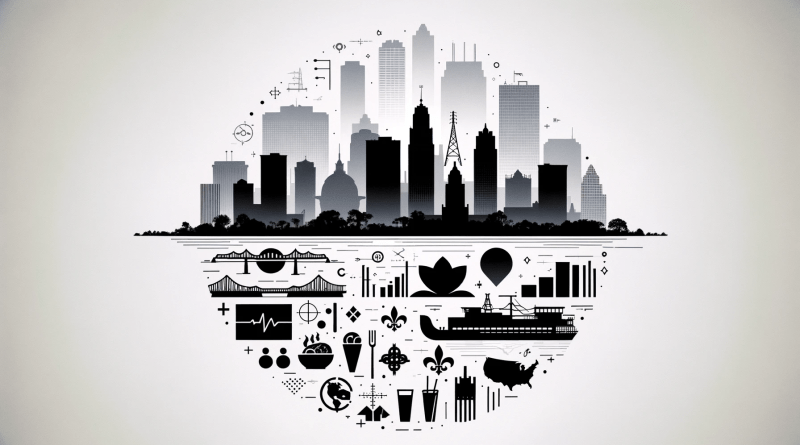Human Geography: 5 Key Examples and Insights
Human geography is a fascinating field exploring relationships between people and their environments. It encompasses various topics, from urban planning to cultural traditions. This article delves into five distinct examples of human geography, providing insights into how this discipline shapes our understanding of the world.
The Why of Where: The Case of New Orleans
New Orleans, Louisiana, is a prime example of human geography’s focus on location and environmental adaptation. Initially established by the French in the 17th century for strategic trade purposes, the city has faced significant environmental challenges. Located between the Mississippi River and Lake Pontchartrain and below sea level, New Orleans is a testament to human adaptation through engineering feats like levees and floodwalls. Its evolution reflects the complex interplay between human endeavors and environmental constraints, making it an essential study area for human-environment relations and climate change.
Political Influence: Voting Districts and Electoral Geography
Electoral geography, a subfield of political geography, examines how voting districts are defined and how they evolve. In the United States, these districts are pivotal in determining political representation. The process of redistricting, often influenced by political strategies, highlights the significant impact of human geography on governance and political outcomes.
Economic Geography: Global Distribution of Industries
Economic geography looks at how industries and economic activities are distributed globally. This discipline explores why certain regions become centers for specific industries, such as Silicon Valley’s prominence in the tech industry or the concentration of financial services in cities like New York and London. Resource availability, skilled labor, political stability, and market access are crucial in shaping these economic landscapes.
Cultural Geography: The Diversity of Food in the Philippines
Cultural geography is vividly exemplified by the diverse culinary traditions in the Philippines. This Southeast Asian country showcases a rich blend of indigenous, Spanish, Chinese, and American culinary influences, reflecting its complex history and cultural interactions. The geography of food in the Philippines highlights how geography influences cultural practices and identity.
Urban Geography: The Evolution of Megacities
Urban geography studies cities and their development. Megacities like Tokyo, New York, and Mumbai are prime examples of this sub-discipline. These cities illustrate the dynamics of urban growth, population density, infrastructure development, and the challenges of sustainable urban planning. Understanding megacities provides insights into economic, social, and environmental aspects of human geography.
The Five Themes of Human Geography
The Advanced Placement Human Geography course outlines five key themes:
- Location: Understanding how geographical position affects lifestyles and opportunities.
- Place: Exploring the physical and human characteristics that distinguish one place from another.
- Human-Environmental Interactions: Examining how humans modify and are affected by nature.
- Movement: Investigating the flow of people, goods, and ideas.
- Region: Identifying areas distinguished by unique physical and human traits.
These themes offer a structured approach to studying the diverse aspects of human geography.
Expanding the Scope: Sub-Disciplines and Interconnections
Human geography encompasses various sub-disciplines, including economic, social, political, and cultural geography. Each sub-discipline offers unique perspectives on how human activities and geographic spaces interact. It’s crucial to recognize the interconnectedness of human and physical geography, as seen in areas like environmental geography, which examines the impact of human actions on the physical world.
What Did We Learn Today?
Human geography is a dynamic field that provides valuable insights into the complexities of our world. From the strategic placement of cities like New Orleans to the intricacies of retail locations, it offers a lens through which we can better understand the interactions between humans and their environments. By exploring these examples, we gain a deeper appreciation of the profound impact of human geography on our daily lives and the future of our planet.

